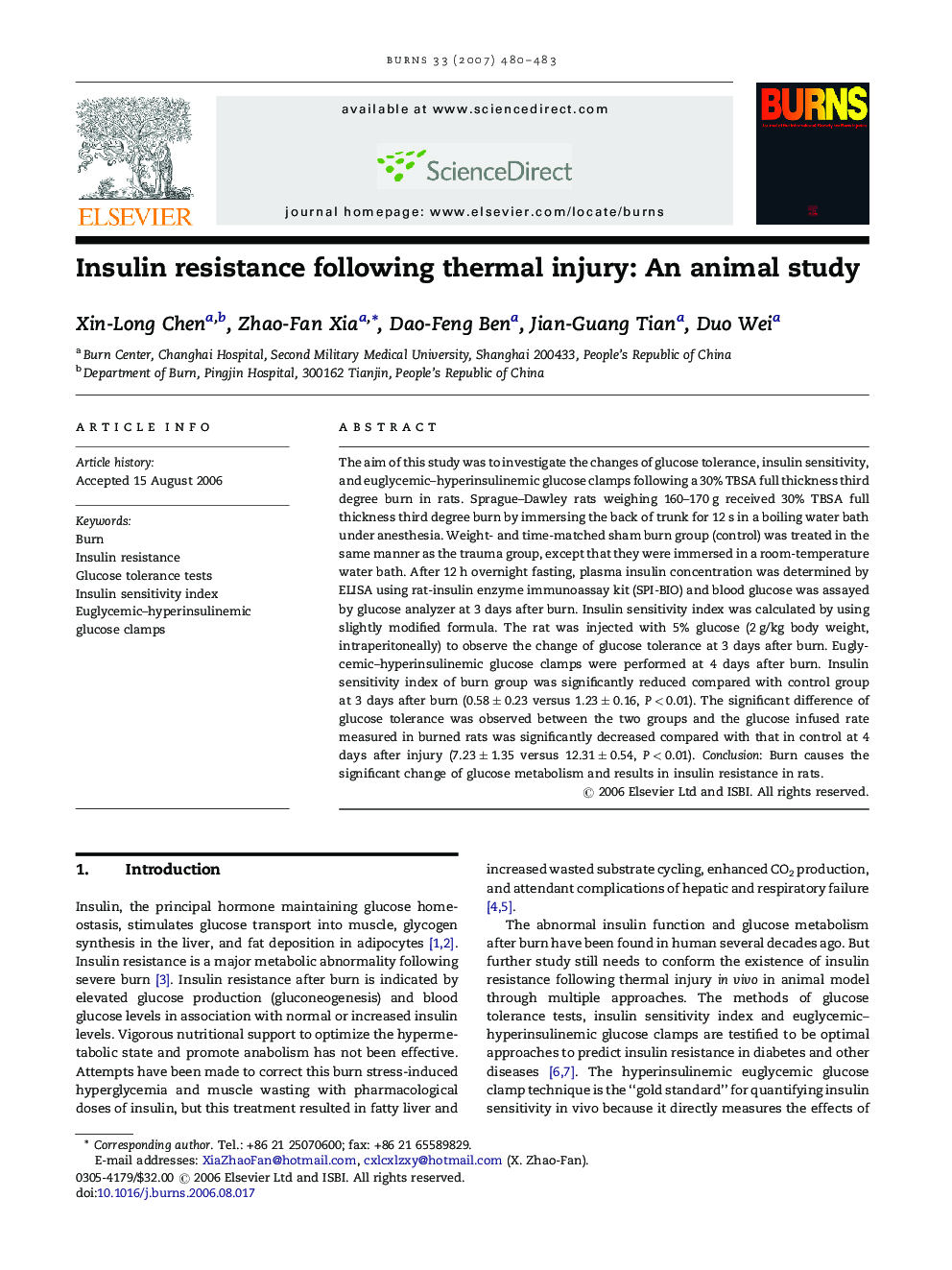| Article ID | Journal | Published Year | Pages | File Type |
|---|---|---|---|---|
| 3106618 | Burns | 2007 | 4 Pages |
Abstract
The aim of this study was to investigate the changes of glucose tolerance, insulin sensitivity, and euglycemic-hyperinsulinemic glucose clamps following a 30% TBSA full thickness third degree burn in rats. Sprague-Dawley rats weighing 160-170 g received 30% TBSA full thickness third degree burn by immersing the back of trunk for 12 s in a boiling water bath under anesthesia. Weight- and time-matched sham burn group (control) was treated in the same manner as the trauma group, except that they were immersed in a room-temperature water bath. After 12 h overnight fasting, plasma insulin concentration was determined by ELISA using rat-insulin enzyme immunoassay kit (SPI-BIO) and blood glucose was assayed by glucose analyzer at 3 days after burn. Insulin sensitivity index was calculated by using slightly modified formula. The rat was injected with 5% glucose (2 g/kg body weight, intraperitoneally) to observe the change of glucose tolerance at 3 days after burn. Euglycemic-hyperinsulinemic glucose clamps were performed at 4 days after burn. Insulin sensitivity index of burn group was significantly reduced compared with control group at 3 days after burn (0.58 ± 0.23 versus 1.23 ± 0.16, P < 0.01). The significant difference of glucose tolerance was observed between the two groups and the glucose infused rate measured in burned rats was significantly decreased compared with that in control at 4 days after injury (7.23 ± 1.35 versus 12.31 ± 0.54, P < 0.01). Conclusion: Burn causes the significant change of glucose metabolism and results in insulin resistance in rats.
Related Topics
Health Sciences
Medicine and Dentistry
Critical Care and Intensive Care Medicine
Authors
Xin-Long Chen, Zhao-Fan Xia, Dao-Feng Ben, Jian-Guang Tian, Duo Wei,
